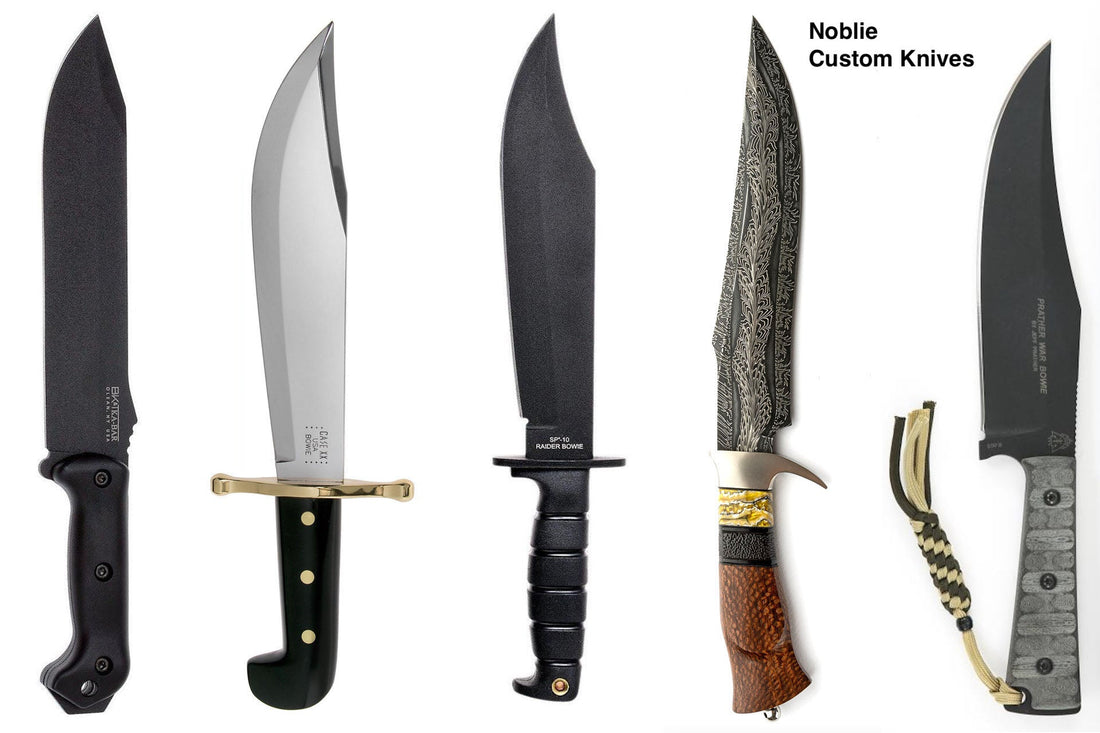Bowie Knife: From Frontier Legend to Timeless Blade
The Bowie Knife is more than just a blade — it’s a piece of American history that bridges the rugged frontier with modern-day craftsmanship. Known for its powerful design, legendary origins, and timeless utility, this iconic knife has remained relevant for over two centuries. From duels on the Mississippi to hunting trips in the wilderness, the Bowie Knife continues to symbolize strength, resilience, and survival.
The Origins of the Bowie Knife
The story of the Bowie Knife begins with Jim Bowie, a 19th-century adventurer who famously used it during the Sandbar Fight in 1827. This violent duel brought the knife into the public eye, cementing its reputation as a formidable weapon. Soon after, blacksmiths across the American frontier began crafting their own versions, giving rise to one of the most legendary frontier weapons of all time.
Defining Features of a Bowie Knife
While designs have varied over the years, certain characteristics make a Bowie Knife instantly recognizable:
- A large fixed blade, often 8–12 inches long.
- A clip point blade, perfect for piercing and precision cutting.
- A balanced weight that makes it equally effective for combat and utility tasks.
- Traditional handles crafted from wood, bone, or horn, adding to its rugged charm.
These features allowed it to thrive as both a combat knife and a survival tool, setting it apart from standard hunting knives.
The Bowie Knife in American Frontier Culture
During the 19th century, the Bowie Knife became a symbol of independence and self-reliance on the American frontier. Pioneers carried it for hunting, skinning, and protection, while soldiers and settlers alike considered it an essential part of their gear. More than just a blade, it became an emblem of the rugged spirit of the frontier.
Modern Uses of the Bowie Knife
Though its days as a dueling weapon are long past, the Bowie Knife remains highly valued today:
- Hunting & Outdoor Survival – Its size and strength make it perfect for skinning game, chopping wood, or even clearing brush.
- Tactical & Military Contexts – Many armed forces and survivalists still rely on Bowie-style knives for their versatility.
- Collectors & Enthusiasts – Antique Bowie knives and handmade Bowie knives are prized collectibles, often commanding high value at auctions.
Bowie Knife vs. Other Blades
A Bowie Knife is often compared to hunting and survival knives, but there are key differences:
- Hunting knives are generally smaller and designed mainly for skinning game.
- Survival knives emphasize multi-purpose design but lack the iconic clip point blade that defines a Bowie.
- The Bowie Knife offers a perfect balance of combat readiness and practical utility, making it a timeless choice.
Collecting and Preserving Bowie Knives
For enthusiasts, owning a Bowie Knife is like holding a piece of living history. Whether it’s a reproduction or an antique, proper care ensures longevity:
- Regular oiling to prevent rust.
- Storing in a dry place with controlled humidity.
- Using soft cloths for cleaning to preserve its blade edge.
Antique Bowie knives can fetch high prices, especially those linked to frontier legends, making them sought-after items in the world of collectibles.
Explore More: Hunting Swords and Frontier Weapons
If the history of the Bowie Knife inspires you, you may also enjoy exploring the legacy of hunting swords and other frontier weapons. Just like the Bowie, these blades carry centuries of tradition and craftsmanship — perfect for collectors, history enthusiasts, and outdoor adventurers alike.
Conclusion
From its legendary origins with Jim Bowie to its place in modern survival gear, the Bowie Knife remains one of the most iconic blades ever crafted. Its blend of history, practicality, and enduring design ensures that it will always be more than just a knife — it’s a timeless symbol of resilience and frontier spirit.
